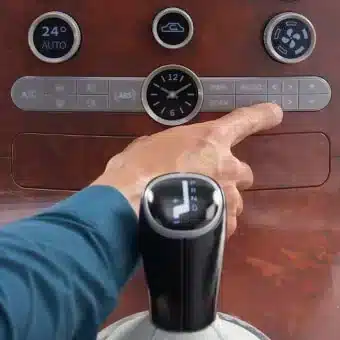As a new era of electric vehicles unfolds, the car manufacturing sector remains fiercely competitive around the world. Now, with an increased emphasis on sustainability, the race to profitably produce quality vehicles remains as challenging as ever.
In addition, automakers must balance efficiency, lean manufacturing, production costs, sustainability, and agile design processes. All are sensitive facets of the industry and need to be managed well.
This can be challenging.
Manufacturers look to tools and technology that help them strike a delicate balance between these and many other factors, while building products that meet stringent quality requirements.
Additive manufacturing is a very important tool to help manufacturers with this effort. It represents an important technological link in that effort and continues to improve, develop, and help reinvent car manufacturing.
Here are six ways 3D printing is helping change the landscape of automotive manufacturing:
1. Rapid Prototyping
Speed to market is a business attribute that can be the difference between success and failure in many industries, but especially in the automotive industry. Product lifestyle management incorporates prototyping, and rapid prototyping shortens the design and development life cycle in automobile production.
Legacy prototyping methods, such as machining or injection molding, are expensive and time consuming to produce a single prototype.
In contrast, additive manufacturing is another story.
Stratasys, for example, is an industry leader in PolyJet 3D printers . These printers use materials suitable for cost-effective prototyping and automotive applications. PolyJet 3D printers enable rapid prototyping in a matter of hours, leading to faster testing, iterations, and design changes of automotive components and assemblies.
Ultimately, this translates into more efficient and effective product development.
2. Improved Design 
By using the right additive technology, automakers are able to push beyond the traditional limits of automotive design and produce innovative new vehicles.
Additive manufacturing and 3D printing allow automotive engineers to design and modify complex, organic shapes that would otherwise be too difficult (often impossible) to produce with traditional manufacturing methods.
To find out which 3D printing technology to use for your automotive needs, download this Automotive Solutions Guide.
3. Custom 3D Printed Parts
The ability to create highly customized parts is essential in automotive manufacturing. Such customization is not otherwise possible with traditional manufacturing methods that rely on legacy methods of mass production, outsourcing, long lead times, and higher costs.
Radford Motors, for example, relied heavily on additive manufacturing for prototyping and building the Radford Lotus Type 62-2 production vehicle. 3D printers enabled a streamlined development and production process so the company could focus on sophisticated craftsmanship, customization, and performance.
4. Light Materials
The automotive industry is constantly trying to reduce the overall weight of its parts and designs. 3D printers enhance this effort by utilizing lightweight materials such as engineering plastics and composites.
The result: a significant reduction in vehicle weight, increased fuel efficiency and lower emissions, while maintaining an advantage over competitors who may not be able to match those performance improvements.
5. Sustainability
The automotive sector always seeks to manufacture with maximum efficiency. 3D printers once again align with such goals. The flexible and versatile attributes of 3D printing help automakers reduce their carbon footprint. When waste is reduced and production is much more efficient, the overall manufacturing line becomes more sustainable.
In addition, environmentally friendly materials can be tested and used, with less waste and less energy. This greatly contributes to the overall carbon footprint of the manufacturing process. 3D printing represents a great contribution to the effort that almost all car manufacturers are trying to accomplish today.
However, traditional processes such as machining often result in significant amounts of material waste.
6. Increased Efficiency
The precise nature of 3D printing allows for the production of auto parts on demand. This eliminates the need for large inventories of spare parts, as the printer provides much greater self-sufficiency without the need for inventory stock.
The H350™, powered by SAF technology, produces consistent 3D printed automotive parts that are accurate, cost-effective and demonstrate strong mechanical capabilities. In fact, the H350 supports a large build capacity of up to 12%, optimizing mass production of end-use parts.
This saves manufacturers time and money and reduces, if not eliminates, the risk of stock-outs of some parts, while keeping inventory lower.
These are just some of the ways that the evolution of 3D printing has helped the automotive sector. As each year passes, automotive technology grows and advances, always looking for better products and technologies with more capabilities.
“In the context of the end-to-end manufacturing flow, the time savings with 3D printing is much more than an improvement or a breakthrough – it’s a true transformation.”
Italo Moriggi, Skorpion Engineering
ARTICLE WRITTEN BY STRATASYS








